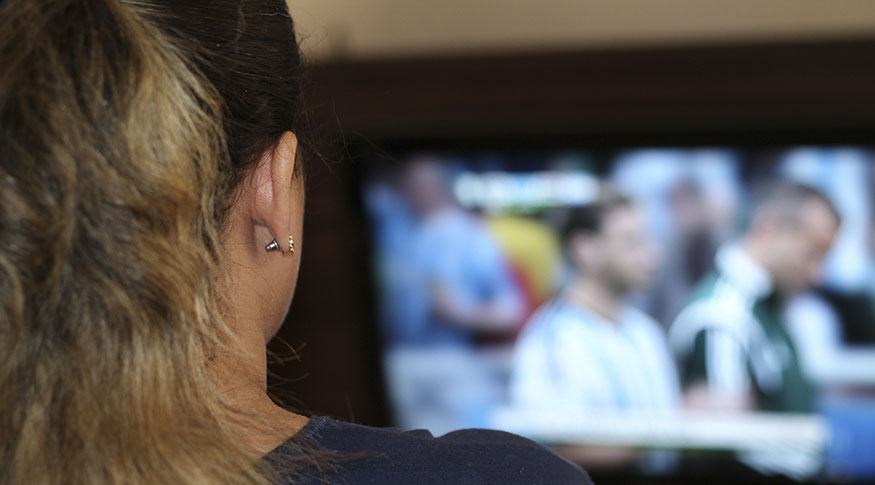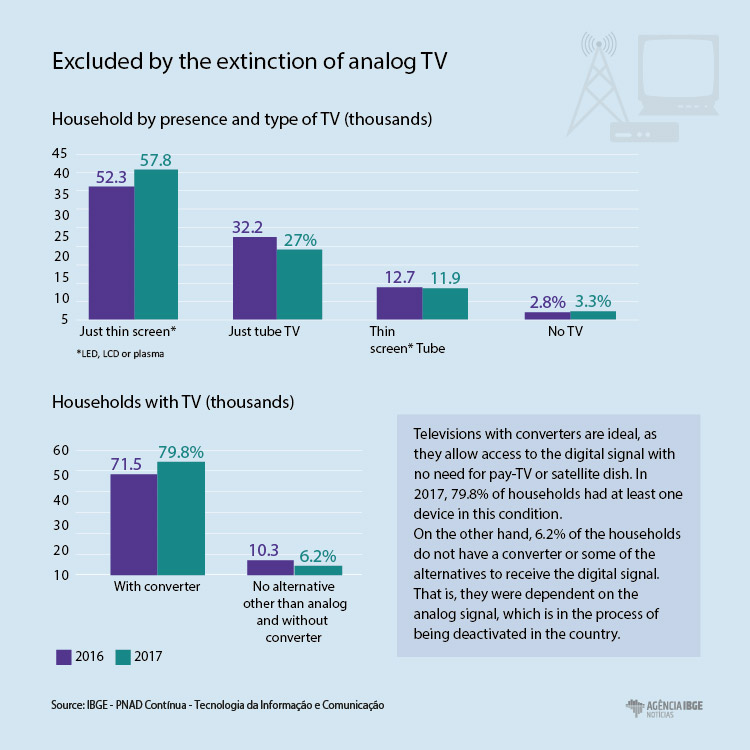Continuous PNAD
Smart TVs grow, but 11.9 million Bazilians still depend on analog signal
December 20, 2018 10h00 AM | Last Updated: December 21, 2018 11h15 AM

At times of technology transition, Brazil has two distinct realities: in 2017, 20.6 million persons aged 10 or older accessed the Internet through Smart TVs (16.3% of the population that used the Internet), while 11.9 million persons lived in households dependent on the analog signal, which is in the process of being replaced with the digital one. The data are from the publication of Information and Communication Technology of the Continuous National Household Sample Survey (PNADC-ICT), released today by the IBGE.
The growth in the use of televisions for Internet access was fast: in 2016, 13.1 million (11.3% of the population) used TV sets for that purpose, while the number rose to 20.6 million in 2017 (16.3% %), an increase of more than 7 million users. The absolute increase only lost to the mobile phone increase, which rose more than 12 million in a year, from 109.8 million in 2016 (94.6%) to 122.5 million in 2017 (97%).
"The survey has pointed out to growth in the use of TV for Internet access. It called our attention because it goes right the opposite way of desktop computers and tablets, which fell in the same period," says researcher Adriana Beringuy, mentioning the fall in the use of computers and tablets for access from 65.9% in 2016 to 58.5% in 2017.

However, even with the modernization of devices, there is still a great potential excluded by the extinction of the analog TV signal, which is being gradually replaced with the digital one. In 2017, 79.8% of the households had TVs with converters (built-in or not), which allows the digital signal to be tuned without any other means. Those who neither had the converter nor any other alternative (satellite dish or pay-tv) were 6.2% of households with television.
"The survey also shows that, although in decreasing trend, there are still about 4.2 million homes with TVs that will stop working it if the analog signal is turned off. This percentage was once higher, but has been falling mostly due to the advance of the converters in new TVs or to the fact that the old ones are adapted with converters," says Adriana.
This potential exclusion caused by the extinction of the analog TV signal is greater in the North and Northeast Regions, where the lower purchasing power has delayed the technological transition from tube TVs to thin TVs (LED, LCD and plasma).

"The 6.2% result is an estimate for Brazil, but this proportion grows in the North and Northeast of the country. In the Northeast, 8.1% are in this condition of vulnerability, while the North has 11.3%. On the other hand, the Southeast Region has the lowest proportion of households in this condition, with 4.4%," she explains.
Mobiles are major means of Internet access
Mobile phones are still leading as the main device used to access the Internet, with 97% of the Internet users (122.5 million). Even though it is the most popular means, mobiles posted strong growth, since there was an increase of about 22 million compared to 2016.
The proportion reflects the growth of mobile cell phone use in the country. In 2017, 141.6 million (78.2%) of the persons aged 10 and older had the device for personal use, 3.3 million higher than in 2016, when they were 138.3 million (77.1%).



















